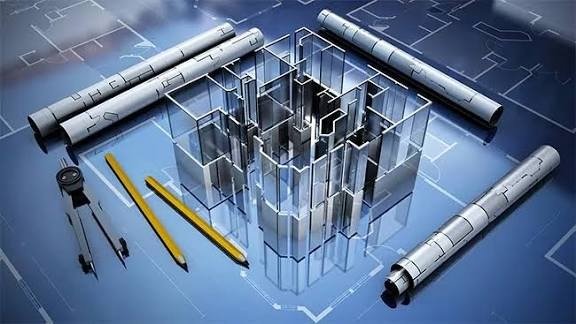Relocating an office is a complex process that involves much more than just moving furniture from one location to another. Businesses must manage schedules, protect sensitive data, and maintain productivity while transitioning to a new workspace. Office movers specialize in minimizing downtime during relocations, ensuring that operations continue smoothly with minimal disruption. Understanding their strategies and services can help organizations plan efficient, stress-free moves.
Why Minimizing Downtime Matters
Downtime during an office move can significantly impact business operations. Lost productivity, delays in client services, and operational disruptions can affect revenue, employee morale, and client satisfaction. For companies that rely on continuous workflows, even a few days of downtime can be costly.
Office movers play a crucial role in reducing downtime by providing organized, efficient relocation services. Their expertise ensures that staff can resume work quickly, equipment is properly set up, and no essential documents or devices are lost in the process.
Pre-Move Planning and Consultation
Effective office relocations begin long before moving trucks arrive. Professional office movers engage in thorough pre-move planning to minimize downtime.
1. Site Assessment
Movers conduct a detailed evaluation of both the current office and the new location. They assess:
- Floor plans and space requirements
- Accessibility for trucks and equipment
- Storage needs and potential obstacles
This allows for accurate planning of logistics and ensures a smoother move.
2. Customized Moving Plan
A tailored moving plan is created to suit the company’s specific requirements. This includes:
- Timeline of packing, transport, and setup
- Allocation of resources and personnel
- Identification of priority items such as servers, sensitive files, and essential office equipment
By organizing the move step by step, professional movers reduce the chances of unexpected delays.
3. Employee Coordination
Movers coordinate with staff to determine which departments or teams require special attention. Employees are often involved in labeling, packing personal workstations, and communicating essential priorities. Clear communication ensures that everyone knows what to expect during the move.
Efficient Packing and Labeling
Proper packing and labeling are essential for minimizing downtime and ensuring that items are easily accessible at the new office.
1. Specialized Packing Materials
Office movers provide high-quality packing materials tailored for office equipment, including:
- Anti-static packing for electronics and servers
- Sturdy boxes for documents and office supplies
- Custom crates for delicate or valuable items
Using the right materials prevents damage and reduces the time required for setup at the new location.
2. Systematic Labeling
Items are labeled with detailed information, including the department, employee, and destination area within the new office. This systematic approach allows movers to place items directly in their designated locations, avoiding unnecessary handling or searching.
3. Inventory Management
Movers often create an inventory list of all items being transported. This helps track equipment, furniture, and documents, ensuring that nothing is lost or misplaced. Efficient inventory management reduces delays during unpacking and setup.
Handling Technology and Sensitive Equipment
One of the most critical aspects of office relocation is the safe transport of technology and sensitive equipment.
1. IT Equipment Protection
Servers, computers, and networking equipment require specialized handling to prevent damage or data loss. Office movers often collaborate with IT staff to:
- Properly shut down and disconnect devices
- Use padded containers and anti-static materials
- Ensure that wiring and components are labeled for easy reconnection
2. Secure Document Handling
Confidential files and sensitive documents must be securely packed and transported. Professional movers may provide lockable containers or secure transport services to protect company information.
3. Minimal Disruption to Operations
By scheduling the moving of technology during off-hours or weekends, office movers can minimize disruption to daily operations. This approach ensures that employees can continue working with minimal downtime.
Coordinated Transport and Logistics
Transporting office items efficiently is another key factor in reducing downtime.
1. Multiple Vehicle Coordination
For larger relocations, multiple trucks may be needed to transport furniture, equipment, and documents. Movers coordinate vehicle schedules to ensure all items arrive at the new location promptly.
2. Route Planning
Professional movers plan routes to avoid traffic congestion and delays, especially in urban areas like Toronto. Efficient route planning reduces transport time and ensures timely delivery.
3. Staging Areas
Movers may set up staging areas at the new location where items can be temporarily stored and organized. This allows for a smooth transition and reduces chaos during the setup process.
Furniture Assembly and Workspace Setup
Once items reach the new office, quick and organized setup is crucial to minimize downtime.
1. Furniture Reassembly
Movers can reassemble desks, cubicles, and office furniture efficiently, allowing employees to return to work quickly. Professional movers have the tools and experience to handle complex office layouts without damaging furniture.
2. Placement of Equipment
Labeled boxes and inventory lists allow movers to place items directly in their designated locations, reducing the time employees spend searching for supplies or equipment.
3. IT Setup Support
While movers are not IT technicians, they work closely with IT staff to reconnect computers, servers, and networking equipment according to the plan. This coordinated effort minimizes downtime related to technology setup.
Post-Move Services
The move doesn’t end once items are transported. Office movers often provide post-move services to ensure full functionality of the new workspace.
1. Cleanup
Movers may remove packing materials, debris, and old furniture, keeping the new office clean and organized.
2. Damage Inspection
Professional movers conduct inspections to ensure that all items arrived in good condition and any damage is documented for accountability.
3. Ongoing Support
Some movers offer support for the first few days after relocation, helping with last-minute adjustments and addressing any issues that arise.
Benefits of Using Professional Office Movers
Hiring experienced office movers brings numerous advantages for minimizing downtime during relocation:
- Time Efficiency: Organized planning and execution reduce the time needed to move.
- Reduced Stress: Expert movers handle logistics, allowing staff to focus on business continuity.
- Safe Handling of Equipment: Specialized packing and transport minimize the risk of damage.
- Smooth Transition: Coordinated setup ensures employees can resume work quickly.
- Legal and Insurance Compliance: Professional movers are insured and knowledgeable about regulations, protecting your company from liability.
Businesses looking for reliable relocation services can learn more about office movers Toronto to find specialized teams that minimize downtime and ensure a smooth transition.
Conclusion
Office relocations can be complicated and stressful, but professional movers play a critical role in minimizing downtime. From detailed planning, efficient packing, and secure transport to rapid setup and post-move support, their expertise ensures that businesses continue operating with minimal disruption.
By hiring experienced movers, coordinating with staff and IT teams, and implementing organized strategies, companies can enjoy a smooth transition to their new location while protecting valuable equipment, documents, and employee productivity.
A well-executed office move not only saves time and money but also ensures a positive experience for employees and clients alike, allowing businesses to settle into their new space seamlessly and resume normal operations quickly.
YOU MAY ALSO LIKE: 8 Steps to Create the Perfect Guest Suite or Home Office










